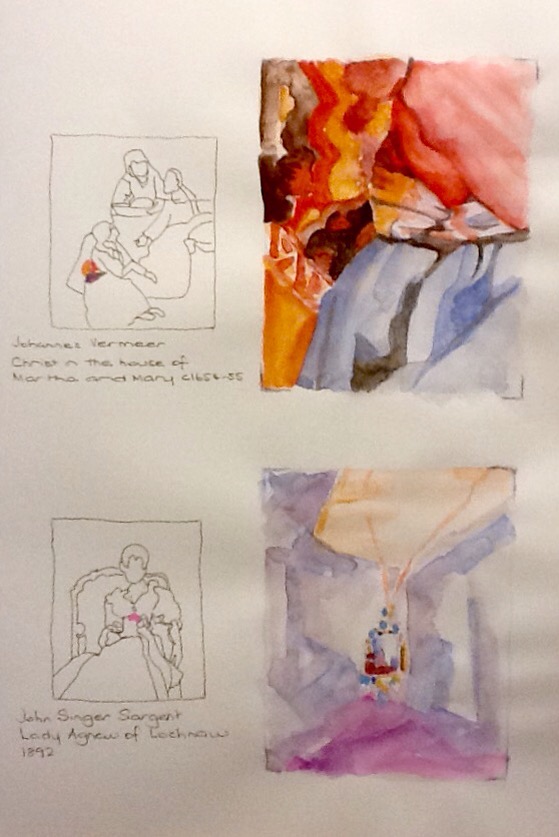‘The Greats’, Masterpieces from the galleries of Scotland exhibition at the Art Gallery of NSW was a feast for the eyes. The works span from early Rennaissance to Impressionism. As with many exhibitions of this kind, there are many pieces that become ‘familiar’ through books and the internet. But it is always amazing to see the difference in the real form. I am usually surprised by:
- its scale – it is either bigger or smaller than I thought
- its detail – the brush marks and layering which is not always evident in reproductions
- its colour – it is either brighter or duller than I imagine
- its simplicity or complexity technically – it always seems the reverse of what I would have thought.
Some of the pieces are so rich in what they show. Like a landscape, there is so much to take in, it can be a bit hard to know where to start in appreciating it.
As I was not able to stay more than hour or so, I decided to take iphone shots of the ones I liked – one in its entirety and another for a tiny detail that caught my attention.
And what you see here is an exercise in appreciation.
The dab of colour in the thumbnail sketch (left) is the detail I’ve had fun doing (right). It’s a treat to ‘unpack’ a fraction of what each artist was doing. Though, to be honest I was not quite sure how to ‘do’ Seurat’s technique. It seems a bit compex to me but very interesting nonetheless.
Works:
- Johannes Vermeer, The house of Martha and Mary (1664-5)
- John Singer Sargent, Lady Agnew of Lucknow (1892)
- Paul Cezanne, The big trees (1902-4)
- Georges Seurat, La Luzerne, St Denis (1885)


An interesting idea, D.C.! I like what you’ve done with The Big Trees excerpt…the bold colour, its abstractness yet being quite distinct, one doesn’t need to think twice.
LikeLike
Always love to hear from you – to be honest, I didn’t start with the overall picture and was so ‘in’ the detail I wasn’t sure what I was copying except for doing dabs of colour, light, shape. But I guess thats what can lead to abstraction which is great.
LikeLiked by 2 people
Yeah…that’s what reverie kinda does to ya…fabulous things happen! Merry Christmas to you. 🙂
LikeLike
Thank you – hope you’ve had a lovely and yum day ☺️
LikeLike
Fantastic way to get a handle on these works. This is another show I want to see before it ends. The list is getting bigger !
LikeLike
It’s been a while since I’ve been to an exhibition and so I enjoyed this one. I look forward to visiting the MCA one you mentioned too.
LikeLiked by 1 person
Wonderful and interesting studies. N.
LikeLike
Thank you – I like it as a way of exploring how an artist does or thinks about something.
LikeLike